APA style
APA style
APA is the abbreviation for the American Psychological Association. This organization has created certain standards of writing research papers for authors in the area of social sciences. These set of standards is called APA style. The standards are very specific about documenting the sources in the reference list. Many courses taught at John Jay College require from the students to document the sources they used for writing their research paper according to the APA style. The library has created a guide to APA style.
Barcode
A barcode is a combination of numbers printed on a sticker and attached to each book/library material as a unique identifier.
Borrow
Borrowing refers to checking out library materials.
Call number
An identifying combination of letters and numbers that every library material has. It reflects the subject field of the material and its location in the library. Most academic libraries in the United States use the call number classification system developed by the Library of Congress. In order to locate a book or a journal in the library you would need a call number that can be found in the library catalog, OneSearch. More information about the Library of Congress Classification system is available in a detailed guide from the Library of Congress.
Check out
To borrow a library item for use at home (“stacks” circulating books) or in the library (“reserve” items such as textbooks and chargers). In order to check out a book, you should locate it first in the library online catalog OneSearch, write down the call number and note the location (“stacks”, “reserve”), find the book on the shelf if it is a “Stacks” item, and bring it to the Circulation desk. If the item is on “reserve” bring the call number to the circulation desk and our circulation staff will retrieve the item for you to borrow.
Circulation Desk
The Circulation Desk is located on the lower level near the library entrance. This is where you check out and return books.
All of the data which adequately identifies a particular source of information such as a book, a journal article, or a website. Citations may also be called references. Citations are required so that other researchers or professors can find the sources of information students have used to prepare their papers and to check on their truthfulness to the original sources. In case of a book, citation includes author, title, date of publication, and the name of the publisher. In case of an article, citation will also include title of the periodical, volume, and pages on which the article appeared.
CLICS (CUNY Libraries Inter-Campus Services) allows you to request materials from another CUNY library and have them delivered to the campus library of your choice.
The majority of the databases provide access to the full-text electronic versions of journals. You can also use databases to read books online, get statistical data, or access governmental publications.
Due date
A due date is the date by which library materials must be returned.
An ebook (also written as eBook) is an electronic version of a book. The library catalog includes tens of thousands of ebooks that can be read online, and in most cases, portions or the entire book can be printed or downloaded.
Documents available online for the students taking certain classes; these documents can be accessed at the eReserves page. Your professor should provide you with a password for accessing these materials online.
Full-text electronic journals
The library gets many of its journals in electronic format. "Full-text" means the entirety of an article is available for you to read, rather than just an abstract or citation. Many of the databases to which the Library has access allow you to limit your search to full-text articles.
Microform / Microfilm / Microfiche
A storage format for keeping back issues of documents. Microfilm is a 16mm or 35 mm film with reduced images of pages on it; microfiche is film cut into cards. Both microform formats require special devices in order to be viewed. Images of pages can be printed out. Microfilm and microfiche are arranged in our library according to their call numbers in cabinets near the Reference desk. We have multiple microform viewers on the second floor of the Library, including one that will create digital scans of the images, available for you to download.
OneSearch is a "mega-database" that lets you search for articles, books, ebooks, videos, and more, all on one convenient platform. Search many databases at once using OneSearch.
Overdue
A book that is checked out and kept after due date. Books can be renewed online.
Periodical
A publication that comes out periodically, such as a monthly magazine or quarterly academic journal. In the Lloyd Sealy Library, print periodicals are shelved upstairs in the southern wing.
A research article that has been reviewed by the author's peers, also experts in their field of study, before publication in a scholarly journal (a periodical containing academic research articles). You might see peer-reviewed articles referred to as academic articles and scholarly articles.
Plagiarism
The taking of someone else's ideas or their expression of ideas without giving them credit.
Reference books
Library books that cannot be checked out. The reference collection consists of materials that are frequently used for general information (encyclopedias, dictionaries, handbooks, indexes, etc.). Reference books in the John Jay College library have blue tape on their spines.
Reference Desk
The desk on the upper level of the library where you come for assistance with your research.
References or Reference List
A list of citations or references at the end of a book, article or website. Giving adequate credit to sources, and in the proper format, is a requirement for academic writing.
Reference Law
Legal reference books that cannot be checked out. These books have red tape on their spines. The Reference Law area is on the upper level of the library, near the periodicals section.
Reserve
Class materials such as textbooks held at the circulation desk for specific classes. Most of the reserve materials can be borrowed for a limited amount of time for in-library use only.
Special Collections
Collection of unique books, John Jay College papers, reports, etc. These books have brown tape on their spines and cannot be checked out.
Special Collections Room
Library collections that can be used by appointment only. These include college archives, old and rare books, etc.
Stacks
Collection of library books that can be taken home, i.e., checked out. Stacks are located on both floors of the library. The stacks are divided into two parts: call numbers A–H (upper level) and call numbers J–Z (lower level).

